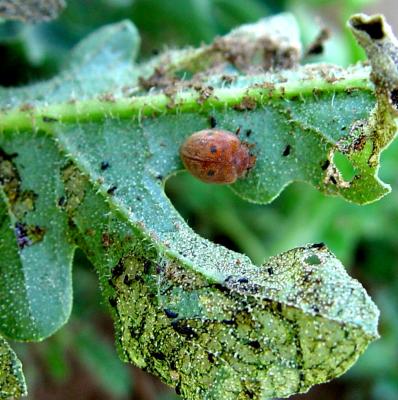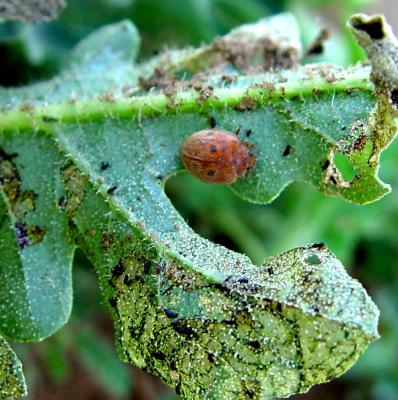

Epilachna beetles (Epilachna spp.)
Several species of Epilachna beetles feed on the leaf tissue in between the veins leaving a network of veins intact. The adult beetles are oval, about 6 mm in length and reddish brown to brownish yellow in colour with black spots on their backs. They look very similar to the beneficial ladybird beetles (predators), but the body of this pest ladybird beetle is covered with short, light coloured hairs, which give them a non-glossy or matt appearance.
They lay eggs in clusters (20 to 50 eggs), usually on the underside of the leaves and placed vertically. The larvae (grubs) are pale yellow and easily recognisable by the strong branched spines covering their body. Generally, these beetles are minor pests of potatoes, but occasionally the infestation is so severe that control measures are needed.
- Handpick and destroy adults and larvae of Epilachna beetles. This is feasible in small plots.
- Spray neem extracts. Simple neem-based pesticides have been reported to control Epilachna beetles on several crops. Thus, sprays with an aqueous neem seed extract (10g/l) at 10 days intervals showed repellent effect on these beetles in India. In Togo, feeding by Epilachna beetles in squash and cucumber could be reduced significantly by weekly applications of aqueous neem kernel extracts at concentrations of 25, 50 and 100 g/l and neem oil applied with an ultra-low-volume (ULV) sprayer at 10 and 20 l/ha (Ostermann and Dreyer, 1995).
